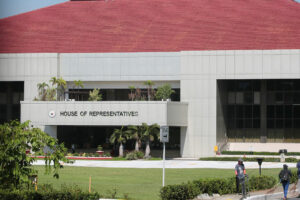Pay attention or die

As you’re reading this, you’re likely listening to your Spotify playlist while occasionally scrolling through Twitter or Facebook. While eating your sandwich or sipping coffee. While wondering what you will have for dinner tonight and who is going to win in the coming May elections.
Welcome to the world of attention deficit.
You may think you’re simply multitasking but, as Angela Haupt said in her review of Johann Hari’s book Why You Can’t Pay Attention — and How to Think Deeply Again (“Our attention spans are suffering. Maybe there’s a way to get them back” by Angela Haupt; Washington Post, Jan. 22, 2022), “this constant switching between tasks is at the root of the attention crisis. There’s been such an enormous increase in the volume of new information available every second that we’ve become transfixed by things that are ‘very fast and very temporary, like a Twitter feed.’ The more information we inhale, he says, the less we’re able to focus on any one piece of it. Our brains aren’t designed to absorb so much at a time: In one study, 136 students took a test; some had their phones turned off, while others received occasional text messages. Those who received messages scored about 20% lower than those who didn’t.”
And this distracted attention span, the inability to focus, comes at a cost. Andrew Haldane, Bank of England chief economist, claims that a “rising incidence of attention deficit disorders, and the rising prominence of Twitter, may be further evidence of shortening attention spans,” which, according to the article that quotes him (“Is Twitter bad for economic growth?”; The Guardian; Feb. 18, 2015), is the danger of “shorter-term decision making.” The point is that “fast thought could make for slow growth,” says Mr. Haldane. “If short-termism is on the rise, this puts at risk skills-building, innovation and future growth.”
Medical data seems to back Mr. Haldane’s assertions: “A preliminary, incomplete, and conservative estimate of the annual COI [cost of illness] of ADHD is $14,576 per child in 2005 dollars, with a very wide range across a small number of studies. Using an ADHD prevalence of 5%, this translates into a minimum annual aggregate COI of $42.5 billion, with a more likely estimate being twice that amount. These costs are staggering and comparable in magnitude to other serious medical and MH problems in both children and adults” (“The Economic Impact of Attention-Deficit/Hyperactivity Disorder in Children and Adolescents”; William E. Pelham, et al.; Journal of Pediatric Psychology, July 2007). The costs covered areas such as healthcare, education, parental work loss, and juvenile crime.
Commonsensically indeed, an individual with a fractured attention span can’t be optimally productive, his lack of focus detracting from his ability to set goals as well as the discipline and concentration necessary to achieve those goals. And since society is inherently composed of the totality of individual actions and decision making, then consequently this seeming difficulty to maintain focus could only result in a country’s loss in terms of productivity, overall welfare, and even security.
Present day culture’s glorification of “busy” is a contributing factor, with the resultant lack of sleep directly leading to a weakened ability to focus. But while it is indeed true that a lessening of one’s general well-being can lead to lessened focus, a lessened focus can also lead to a mitigation of one’s general well-being.
Thus, people with a short attention span could open themselves up to several physical or psychological issues, particularly:
• poor performance at work or school
• inability to complete daily tasks
• missing important details or information
• communication difficulties in relationships
• poor health related to neglect and inability to practice healthy habits (“What Are the Causes of a Short Attention Span, and How Can I Improve It?”; Healthline)
Technology is also seemingly to be blamed for our enslaved attention. As the review of Johann Hari’s book puts it: “Technology is deliberately designed to distract. Big-name websites and apps strive to distract because that’s the key to profitability. When we’re looking at our screens, these companies make money; when we’re not, they don’t. So they manipulate us to keep us there, scrolling and clicking.”
The foregoing is compounded by work demands, specially in today’s compelled “work from home” situation due to misguided COVID measures. Thus, whereas in previous years only cabinet secretaries and medical doctors were needed to be on constant call, nowadays nearly everybody is tethered electronically to their employment.
Which led to what is now known as the “right to disconnect,» which is legislation allowing “people to disconnect from work and primarily not to engage in work-related electronic communications such as e-mails or messages during non-work hours” (see Wikipedia). Thus, employees do not have to take calls or read e-mails related to work when the work day is done or when they are on leave. Several European countries, primarily France, have introduced right to disconnect laws. Large multinational companies have also voluntarily included it in their labor policies.
The Philippines does not currently have equivalent legislation, although it was attempted with the 2017 House Bill 4721 (“An act granting employees the right to disconnect from work-related electronic communications after work hours”). Labor lawyers nevertheless have posited that the right to disconnect is implied in our current labor laws.
The foregoing seems to give new life to the old caution against dilettantes, of the “jack of all trades but master of none.”
Jemy Gatdula is a senior fellow of the Philippine Council for Foreign Relations and a Philippine Judicial Academy law lecturer for constitutional philosophy and jurisprudence
https://www.facebook.com/jigatdula/
Twitter@jemygatdula




